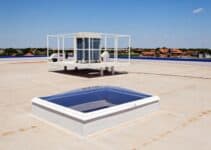Solar energy is something that we have really been looking into in recent years, if for no other reason than to try and find a better way to deal with getting energy without hurting the environment. If you don’t know a lot about solar energy, it is basically energy that we get from the sun that we convert into energy that we can use, whether that energy is used for electricity or for heating/cooling.
Solar energy simply means energy that comes from the sun. Sun is a powerful source of energy. Without it, there would have been no life on the Earth. It is renewable, free, widely available and clean form of energy that is currently in use by many home and business owners for variety of purposes.
In this article, we’re going to give you a closer look at exactly how solar energy works and, in particular, what solar panels are and how they can help us to achieve our goals when it comes to using solar energy in an effective manner. Let’s dive in and take a closer look at the cleanest type of energy that we have access to in today’s world.
How Does Solar Energy Work?
Solar energy is all about converting the energy from the sun into energy that we can use. There are three major ways that we can do this.
- Photovoltaic Processes (PV)
- Photovoltaic processes happen with PV devices, which take the sunlight and make it into electricity.
- PV processes use materials that are known for naturally changing sunlight into electricity, which are known in the science world as semiconductors.
- When the sunlight hits these semiconductors, they produce electrons, which are pushed through the device and make a current.
- PV devices are still in development at this point in time; some rays of light, including UV and infrared, cannot be utilized by PV devices. This can be problematic when the sun is not shining brightly and these are the main rays that are being produced.
- Solar Heating and Cooling (SHC)
- Solar heating and cooling (SHC) is all about thermal energy.
- The energy that is created from the sun is switched into energy that can be used to either heat or cool the devices that are being powered.
- At this point, there are processes that can help in almost any context that you can imagine, from commercial buildings to homes.
- The main reason that solar heating and cooling devices are necessary is because we need to reduce our dependence on natural gases and other fossil fuels.
- Technology in the SHC sector is always changing and adapting, and advances are being made in this area of science every single day.
- Concentrating Solar Power (CSP)
- Concentrating solar power, usually referred to as CSP, are some of the newest technologies that are out there, even though the concept is not as new as many think it is. People have used the concept behind it for a very long time, which is why it’s shocking that it’s taken so long for us to actually harness it on a larger scale.
- Mirrors are the main focus of CSP plants; they concentrate the energy from the sun to cause everything to work effectively. Without the mirrors, CSP systems would not work as effectively as some of the other systems that are currently out on the market today.
- The sun’s energy then makes steam engines and turbines go so that the electricity can be produced and stored. This makes it different than the other types because the storage system is a lot more advanced than what you see from the other types of solar energy that are currently being used.
- Currently, there are just over 1500 different CSP plants located throughout the entire United States; there are over 400 more to be planned within the next 5 years. By the 2020’s, the plan is to have over 3000 CSP’s working throughout the country, with over 5000 throughout the entire world.

What are Solar Panels?
Now that we’ve looked at all of the different types of solar power that is out there and how it works, now we’re going to look at one of the most common devices that are utilized to get solar energy from the sun – solar panels. Let’s take a closer look.
- Solar panels are a type of photovoltaic (PV) solar energy, which we explored in more detail above. In short, the energy from the sun goes through semiconductors, which in turn create the electricity and develop it so that it can be utilized effectively.
- Solar panels take all kinds of light, not just the sun, and turns it into energy over time. The sun is just where the majority of the light comes from.
- On the solar panels, they have a mass amount of solar cells. A cell by itself cannot do much, but a group of cells can help to create enough energy to power whatever it is that they are trying to power.
- Solar cells are tiny disks, usually made of something like silicon. The solar cells will only produce power as long as they are being hit by light – once the light is taken away from the cell, then you will not get any more power.
- This is why many solar panels are equipped with the ability to turn the cells toward the place where the light source is coming from at a specific point in time.
- Solar panels are the main way that the space station, along with various other astronomical technologies, get the electricity that they need in order to take care of all of the energy needs that they utilize in the space station.
- Solar panels are incredibly efficient, and they will be even more so depending on the type of concentrators that you put in there. Technology for solar panels is always changing, so it’s important to keep an eye on the technology and update as you deem necessary.
- If you use solar panels as part of your solar energy plan, you will be able to save a lot of money with your monthly power bills, which is a huge reason that many people have decided to try these out for themselves.
- The most well built solar panels are very hardy and can last for a long time if they are well taken care of.
- The weather around the area in which you are utilizing the solar panels will have a large effect on how long your solar panels are going to last. Wear and tear can cause some major issues if you don’t keep track of how well that they are doing in a period of time.
- Fun fact: Sometimes, solar panels in space get damaged by comets, meteorites, and other “space junk;” this requires the astronauts to go out and make the proper repairs when necessary.
Advantages of Solar Energy
1. Renewable and Sustainable: Solar power is renewable and sustainable. Sun is going to shine till the end of this planet. It all depend on us how can we make best use of resources and use this free source of energy to power our homes and offices.
2. Power Remote Areas: This clean and renewable source of power has proved boon for people living in remote areas and not necessarily connected to national grid.
3. No Pollution: Solar energy is silent and produces no pollution at all. This is one of the big reason why it is favored by many people all around the world.
4. Surplus Electricity: The surplus electricity that is generated can be send back to the power grid and you can get rebate in your monthly electricity bill.
5. Reduce Electricity Bills: The electricity that is generated can be used to power fans, lights, charge mobiles and much more. It is free, renewable, can be produced on demand and also helps you to bring down your monthly electricity bill.
6. Low Maintenance: Solar panels when installed, require little or no maintenance. They require cleaning only few times a year.
7. Job Creation: The solar energy sector has open tremendous opportunities for people. Without doubt, it has slightly reduced the unemployment rate in a country.
Disadvantages of Solar Energy
1. Initial Investment: An initial investment is what is required if you need to harness energy from the sun. This cost can however pay itself in 10-15 years time frame depending on the amount of energy harnessed and the money saved in buying electricity from local grid.
2. Available During Daytime: Solar energy can only be harnessed during daytime. This simply means you can use this source of energy for half a day only.
3. Not Effective During Cloudy or Rainy Seasons: Cloudy and rainy seasons reduce the effectiveness of solar panels. This is the reason why solar energy is not successful in areas where it remains cloudy for most of the time of the year.
4. Large Setup Required: For a large business owner, a huge setup may be required to harness solar energy as its demand for energy may be more which may not get fulfilled by installing solar panels just at the rooftops.
5. Expensive Storage: The energy harnessed from the sun needs to be stored in the batteries to make it available for use later at home or office. The cost of these batteries may influence a buyer’s decision to go for solar power.
There are a number of things that solar power is used for, and as the technology continues to move forward, even more of those things will come to light and it will become a lot easier for us to snatch the power from the sun and use it to power everything that we have. It is really smart and innovative to go out and invest in these technologies as they continue to move forward and change the way that we look at and embrace the world around us.





